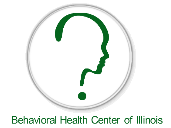




PTSD
What is PTSD?
Posttraumatic stress disorder (PTSD), once called shell shock or battle fatigue syndrome, is a serious condition that can develop after a person has experienced or witnessed a traumatic or terrifying event in which serious physical harm occurred or was threatened. PTSD is a lasting consequence of traumatic ordeals that cause intense fear, helplessness, or horror, such as a sexual or physical assault, the unexpected death of a loved one, an accident, war, or natural disaster. Families of victims can also develop PTSD, as can emergency personnel and rescue workers.
Most people who experience a traumatic event will have reactions that may include shock, anger, nervousness, fear, and even guilt. These reactions are common, and for most people, they go away over time. For a person with PTSD, however, these feelings continue and even increase, becoming so strong that they keep the person from living a normal life. People with PTSD have symptoms for longer than one month and cannot function as well as before the event occurred.
What Are the Symptoms of PTSD?
Symptoms of PTSD most often begin within three months of the event. In some cases, however, they do not begin until years later. The severity and duration of the illness vary. Some people recover within six months, while others suffer much longer.
Symptoms of PTSD often are grouped into four main categories, including:
- Reliving: People with PTSD repeatedly relive the ordeal through thoughts and memories of the trauma. These may include flashbacks, hallucinations, and nightmares. They also may feel great distress when certain things remind them of the trauma, such as the anniversary date of the event.
- Avoiding: The person may avoid people, places, thoughts, or situations that may remind him or her of the trauma. This can lead to feelings of detachment and isolation from family and friends, as well as a loss of interest in activities that the person once enjoyed.
- Increased arousal: These include excessive emotions; problems relating to others, including feeling or showing affection; difficulty falling or staying asleep; irritability; outbursts of anger; difficulty concentrating; and being "jumpy" or easily startled. The person may also suffer physical symptoms, such as increased blood pressure and heart rate, rapid breathing, muscle tension, nausea, and diarrhea.
- Negative Cognitions and Mood: This refers to thoughts and feelings related to blame, estrangement, and memories of the traumatic event.
Young children with PTSD may suffer from delayed development in areas such as toilet training, motor skills, and language.
Who Gets PTSD?
Everyone reacts to traumatic events differently. Each person is unique in his or her ability to manage fear and stress and to cope with the threat posed by a traumatic event or situation. For that reason, not everyone who experiences or witnesses a trauma will develop PTSD. Further, the type of help and support a person receives from friends, family members and professionals following the trauma may influence the development of PTSD or the severity of symptoms.
PTSD was first brought to the attention of the medical community by war veterans; hence the names shell shock and battle fatigue syndrome. However, PTSD can occur in anyone who has experienced a traumatic event that threatens death or violence. People who have been abused as children or who have been repeatedly exposed to life-threatening situations are at greater risk for developing PTSD. Victims of trauma related to physical and sexual assault face the greatest risk for PTSD.
How Is PTSD Diagnosed?
PTSD is not diagnosed until at least one month has passed since the time a traumatic event has occurred. If symptoms of PTSD are present, the doctor will begin an evaluation by performing a complete medical history and physical exam. Although there are no lab tests to specifically diagnose PTSD, the doctor may use various tests to rule out physical illness as the cause of the symptoms.
If no physical illness is found, you may be referred to a psychiatrist, psychologist, or other mental health professional who is specially trained to diagnose and treat mental illnesses. Psychiatrists and psychologists use specially designed interview and assessment tools to evaluate a person for the presence of PTSD or other psychiatric conditions. The doctor bases his or her diagnosis of PTSD on reported symptoms, including any problems with functioning caused by the symptoms. The doctor then determines if the symptoms and degree of dysfunction indicate PTSD. PTSD is diagnosed if the person has symptoms of PTSD that last for more than one month.
How Is PTSD Treated?
The goal of PTSD treatment is to reduce the emotional and physical symptoms, to improve daily functioning, and to help the person better cope with the event that triggered the disorder. Treatment for PTSD may involve psychotherapy (a type of counseling), medication, or both.
Medication
Doctors use certain antidepressant medications to treat PTSD -- and to control the feelings of anxiety and its associated symptoms -- including selective serotonin reuptake inhibitors (SSRIs) such as Paxil, Celexa, Luvox, Prozac, and Zoloft; and tricyclic antidepressants such as Elavil and Doxepin. Mood stabilizers such as Depakote and Lamictal and atypical antipsychotics such as Seroquel and Abilify are sometimes used. Certain blood pressure medicines are also sometimes used to control particular symptoms. For example prazosin may be used for nightmares, or propranolol may be used to help minimize the formation of traumatic memories. "Experts discourage the use of tranquilizers such as Ativan or Klonopin for PTSD because studies have not shown them to be helpful, plus they carry a risk for physical dependence or addiction.
Psychotherapy
Psychotherapy for PTSD involves helping the person learn skills to manage symptoms and develop ways of coping. Therapy also aims to teach the person and his or her family about the disorder, and help the person work through the fears associated with the traumatic event. A variety of psychotherapy approaches are used to treat people with PTSD, including:
- Cognitive behavioral therapy, which involves learning to recognize and change thought patterns that lead to troublesome emotions, feelings, and behavior.
- Psychodynamic therapy focuses on helping the person examine personal values and the emotional conflicts caused by the traumatic event.
- Family therapy may be useful because the behavior of the person with PTSD can have an affect on other family members.
What Is the Outlook for People With PTSD?
Recovery from PTSD is a gradual and ongoing process. Symptoms of PTSD seldom disappear completely, but treatment can help sufferers learn to cope more effectively. Treatment can lead to fewer and less intense symptoms, as well as a greater ability to cope by managing feelings related to the trauma.
Research is ongoing into the factors that lead to PTSD and into finding new treatments.
Can PTSD Be Prevented?
Some studies suggest that early intervention with people who have suffered a trauma may reduce some of the symptoms of PTSD or prevent it all together.
WebMD Medical Reference Reviewed by Joseph Goldberg, MD on February 25, 2018

| Couples Therapy |
| Depression |
| Anxiety |
| Grief and Loss |
| PTSD |